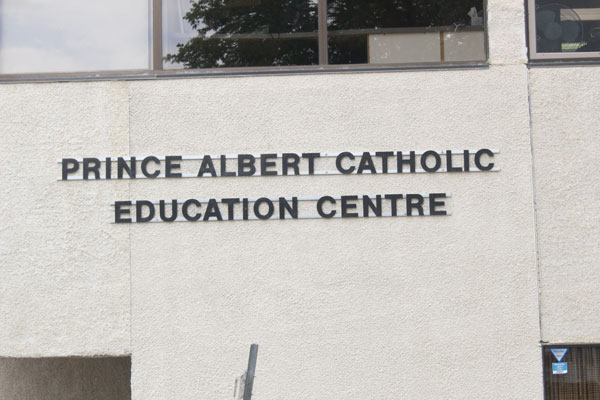At their board meeting last Monday the Prince Albert Catholic Division was updated on the progress of the Provincial Education Plan.
Recently the Provincial Education Implementation Team from school divisions were invited to participate in sessions to review various parts of the plan.
This included its origins, components and framework, organizational structure, development process, the current focus of the interim plan and plan implementation, monitoring and reporting.
“I would say at this point, when you are charting out the next 10 years and you are working through a pandemic which we would have all hoped it would be over by this time, obviously, there is more to it than we would have anticipated,” director of education Lorel Trumier said.
The plan was developed by the Provincial Education Council who first met in December, 2020 to discuss the development, implementation and governance of Saskatchewan’s next decade of learning.
The one-year interim plan will be in place until the 10-year plan is completed.
She explained that the reassessment of priorities in the province in education is important.
“When you are looking at what’s the most important, what are the most important elements for a provincial plan for the next 10 years I am sure some of those priorities have shifted a bit as a result of the pandemic and rightly so. The students of tomorrow require a skill set and instructional elements that perhaps we maybe not have weighted so heavily in the past,” Trumier said.
The planning team created a plan for the structures which will each have unique roles and responsibilities.
Minister of Education Dustin Duncan has oversight of the plan and receives regular reports from the Education Council.
The role of the Education Council is to provide strategic guidance to the development and renewal of the plan.
Meanwhile, the Implementation Team’s role is to establish the outcomes and actions to make the strategy operational.
There are several planning partners involved including the Federation of Sovereign Indian Nations (FSIN), League of Educational Administrators, Directors and Superintendents of Saskatchewan (LEADS), Metis Nation-Saskatchewan (MN-S) and the Gabriel Dumont Institute, Ministry of Education, Office of the Treaty Commissioner, Saskatchewan Association of School Business Officials (SASBO), Saskatchewan School Boards Association (SSBA) and Saskatchewan Teachers Federation.
The implementation team will be providing regular reports to the Education Council.
The members of the Implementation Team also provide regular reports to their boards of education.
The framework of the plan also recognizes that participating First Nations would have accountability and reporting structures.
The intent of the plan is to have province-wide outcomes, measures and actions. The measures and outcomes will then be implemented at the school division level and then school level. Each school division will be accountable to the board of education for their plans.
School Community Councils (SCCs) will also work cooperatively with staff in the implementation of the school-level plans.
She explained that technology and mental health and well-being will be a part of it.
“So I think that it’s a good exercise. We know that there is many in person engagements that even occurred in 2019. We know that there are more meetings occurring on a regular basis with different stakeholder groups. I think there is a good cross section of people in the province that are heavily engaged and that’s going to come out to be a stronger educational plan overall, for sure,” Trumier said.
The province is currently operating under an interim plan for 2021-2022.
The Interim Provincial Education Plan focuses on three key priorities, including additional reading supports for Grade 1 to 5 students.
Reading data will be collected from students in Grades 1 to 5. This will allow teachers to create specialized reading plans where needed that meet students at their individual skill levels.
The provincial-level plan was originally expected to be released in June 2021.
Using these three priorities, school divisions and participating First Nations education authorities will build their own plans in order to meet the unique needs of their students and schools.
The government says supportive learning opportunities for students whose education may have been impacted by the COVID-19 pandemic is also a priority. High school students will be able to obtain credits through a variety of educational avenues, such as classes offered out of grade order, special project credits and online classes.
The third priority is mental health supports for students and staff as they return from a challenging year. This includes nearly $600,000, provided in the 2021-22 Budget, to support initiatives related to bullying prevention and promotion of positive mental health and student safety.
It also encompasses nearly $500,000 committed by the Government of Saskatchewan for Mental Health First Aid training to school divisions.
The board also reviewed the plan at their November meeting.


